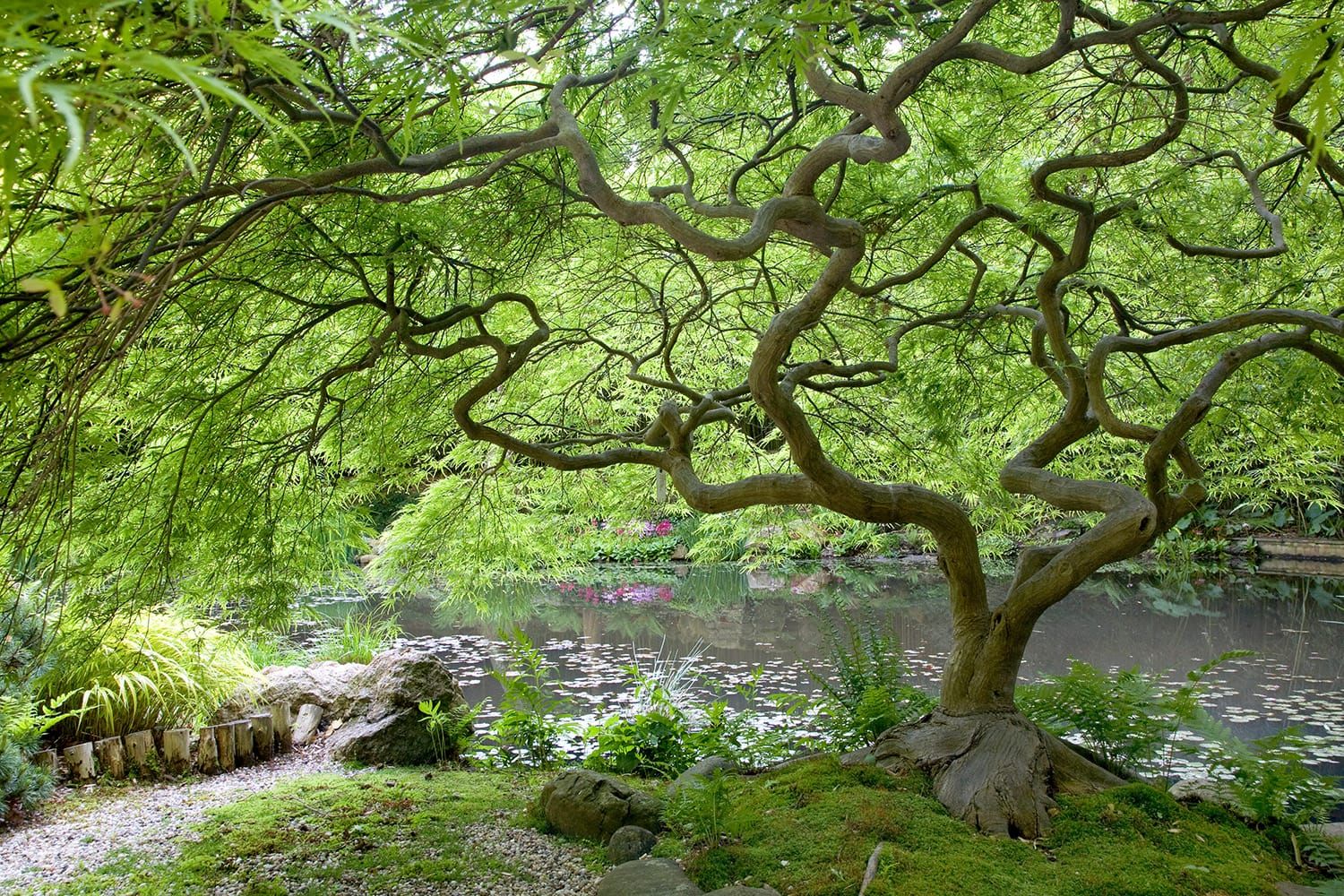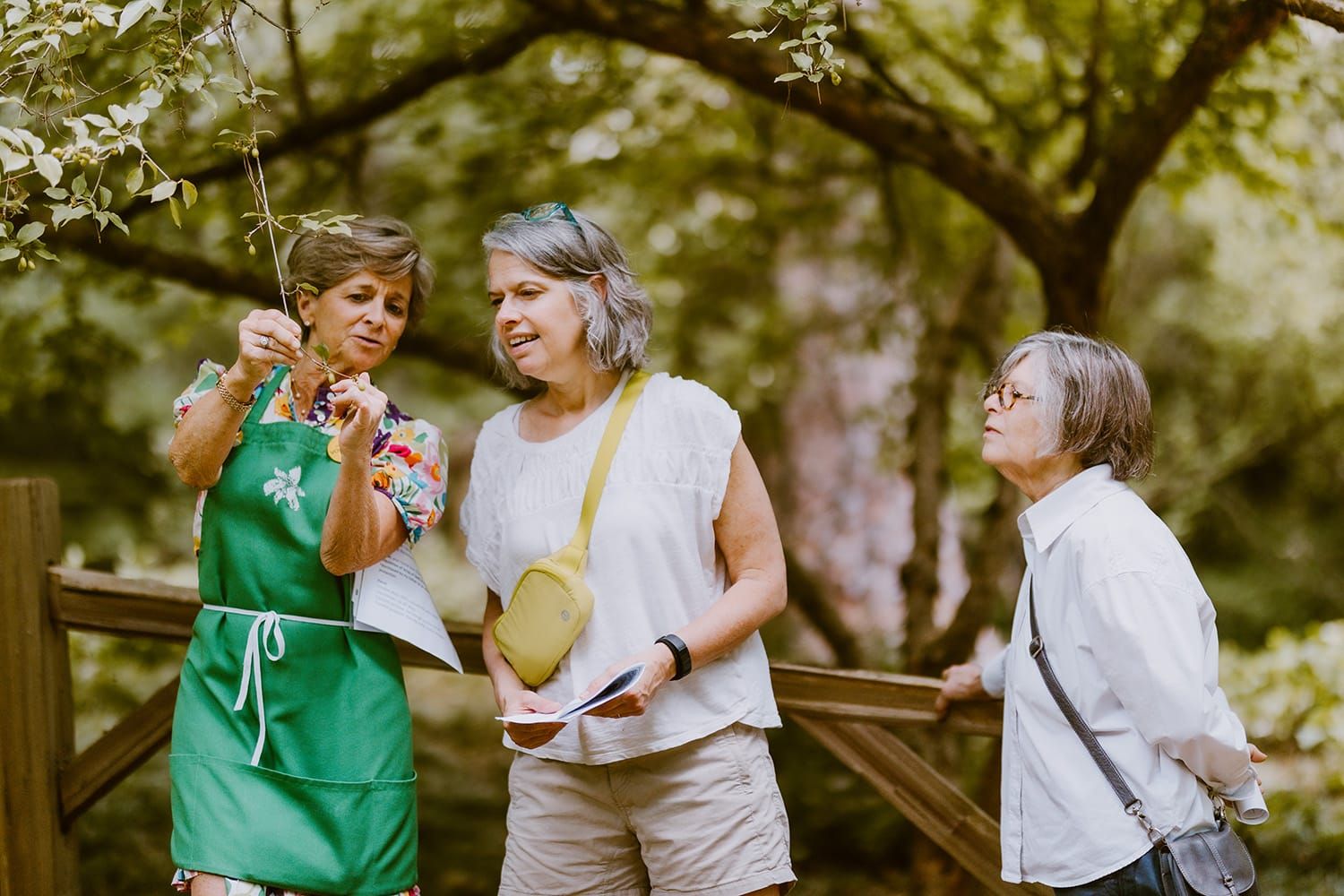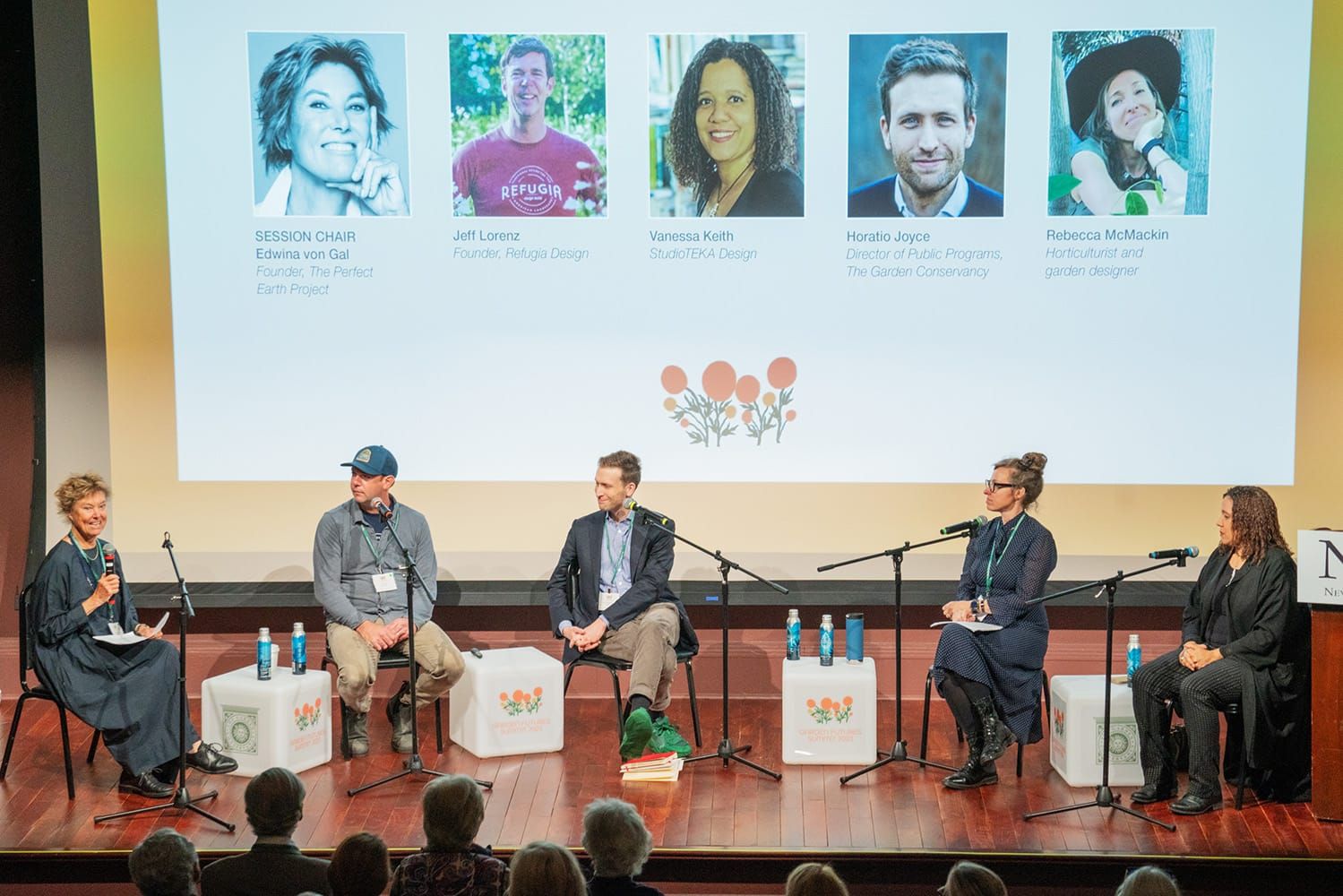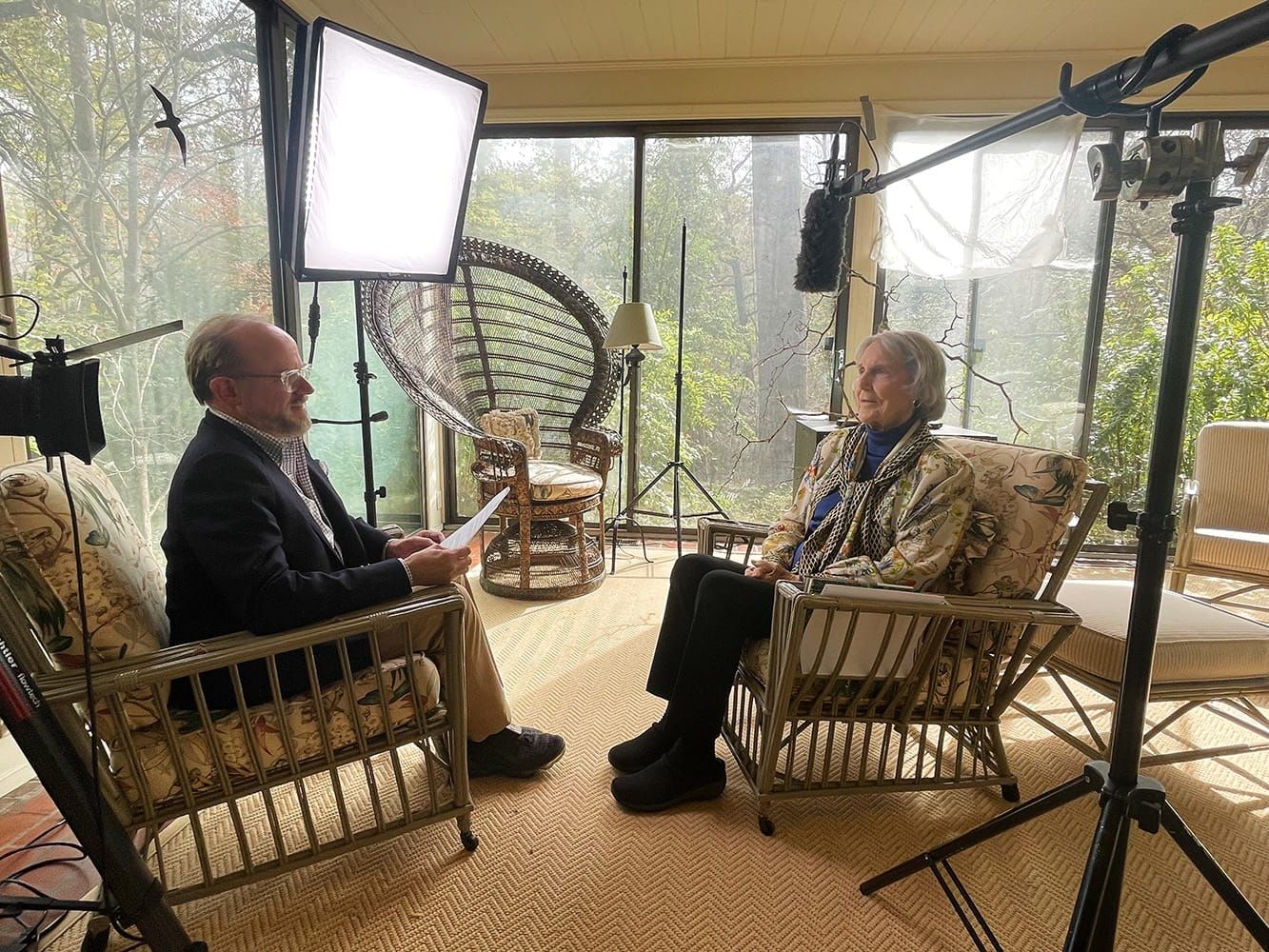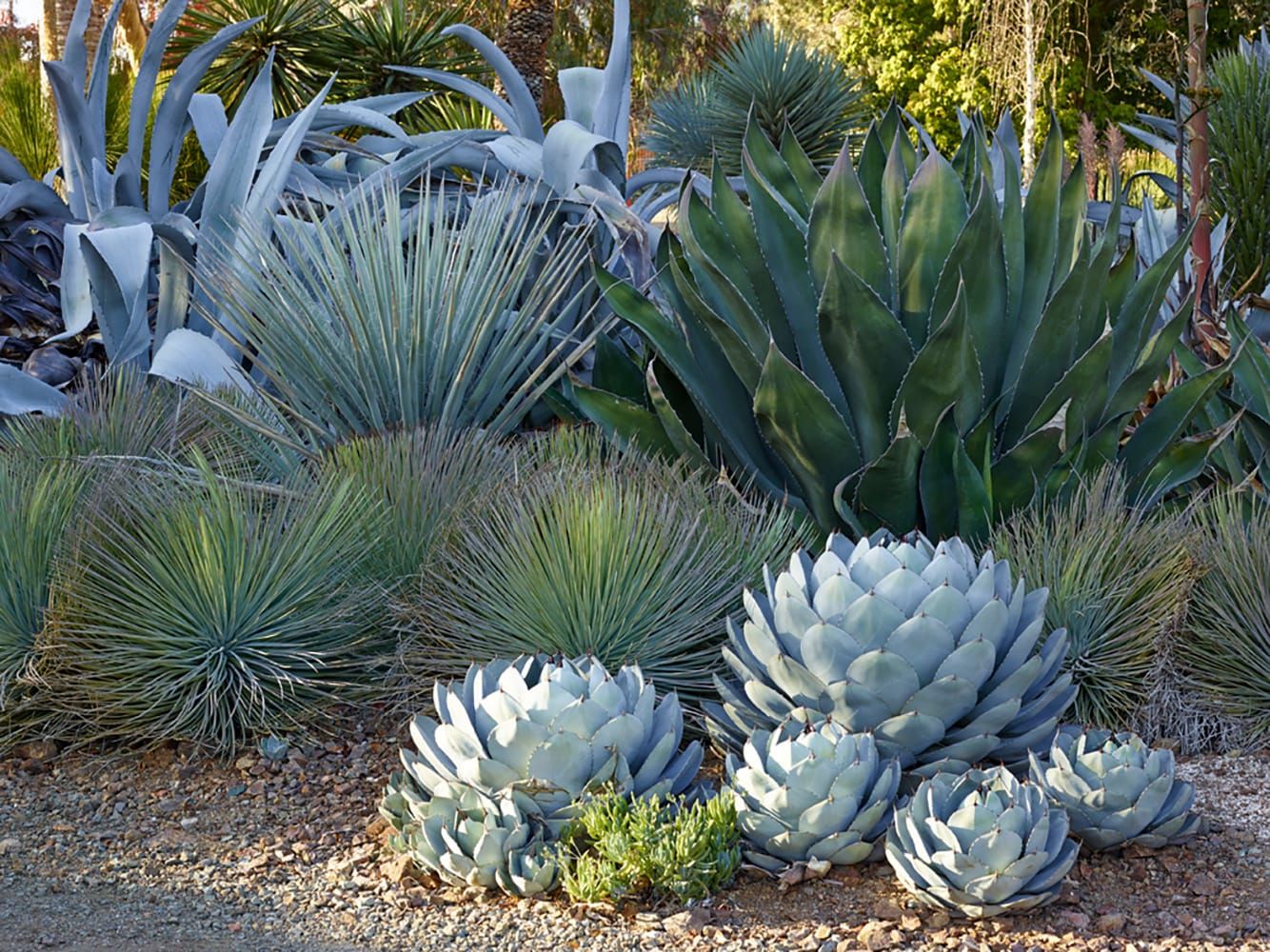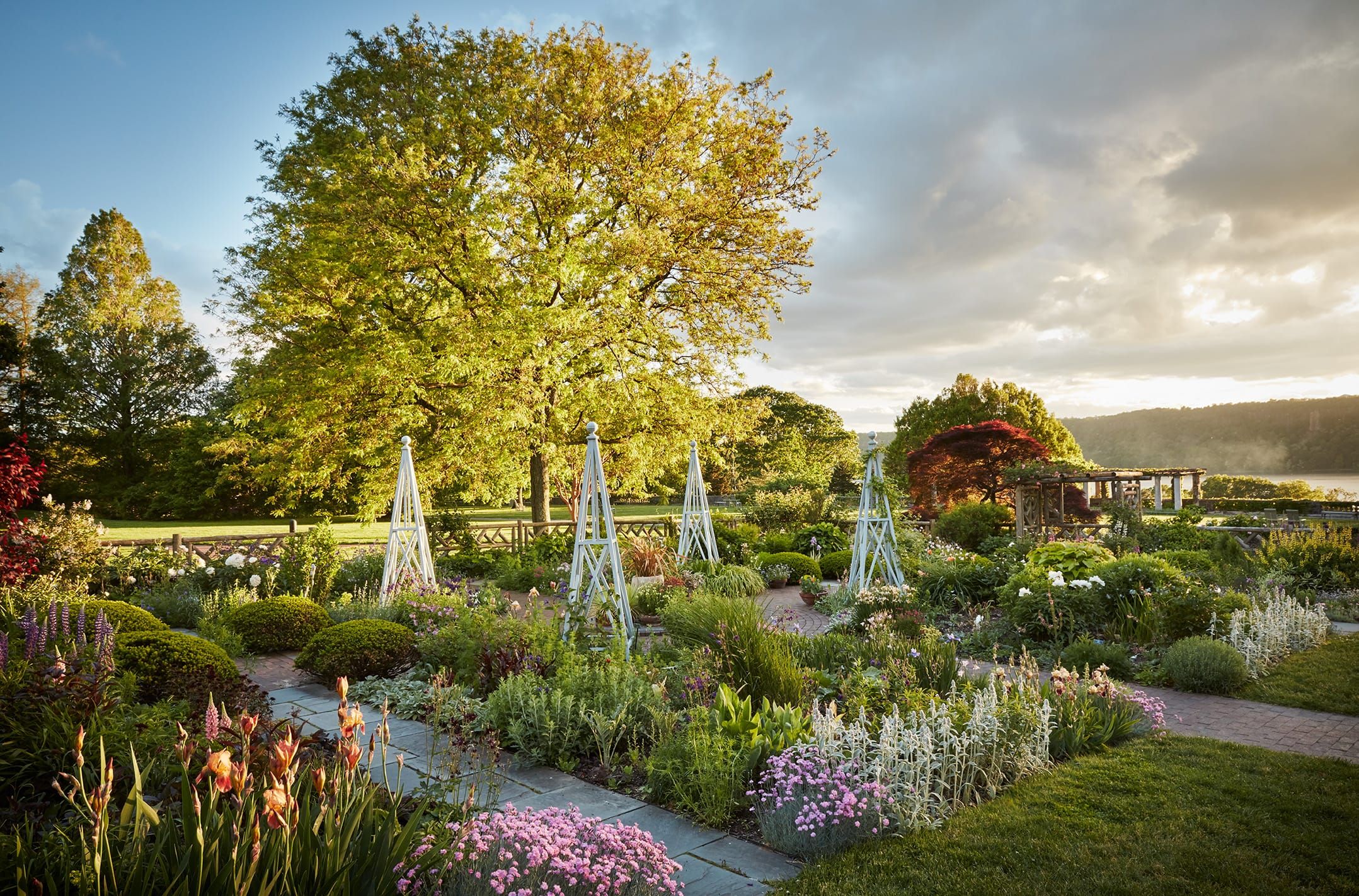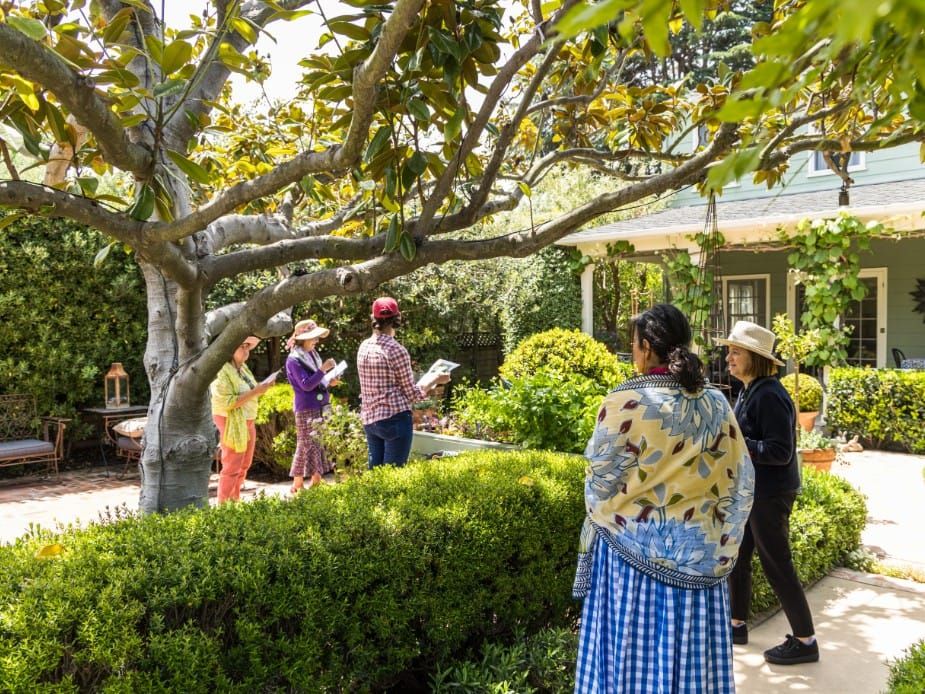Introducing the Garden Conservancy’s First Artist-in-Residence, Plein Air Painter Nancy Friese
December 2024
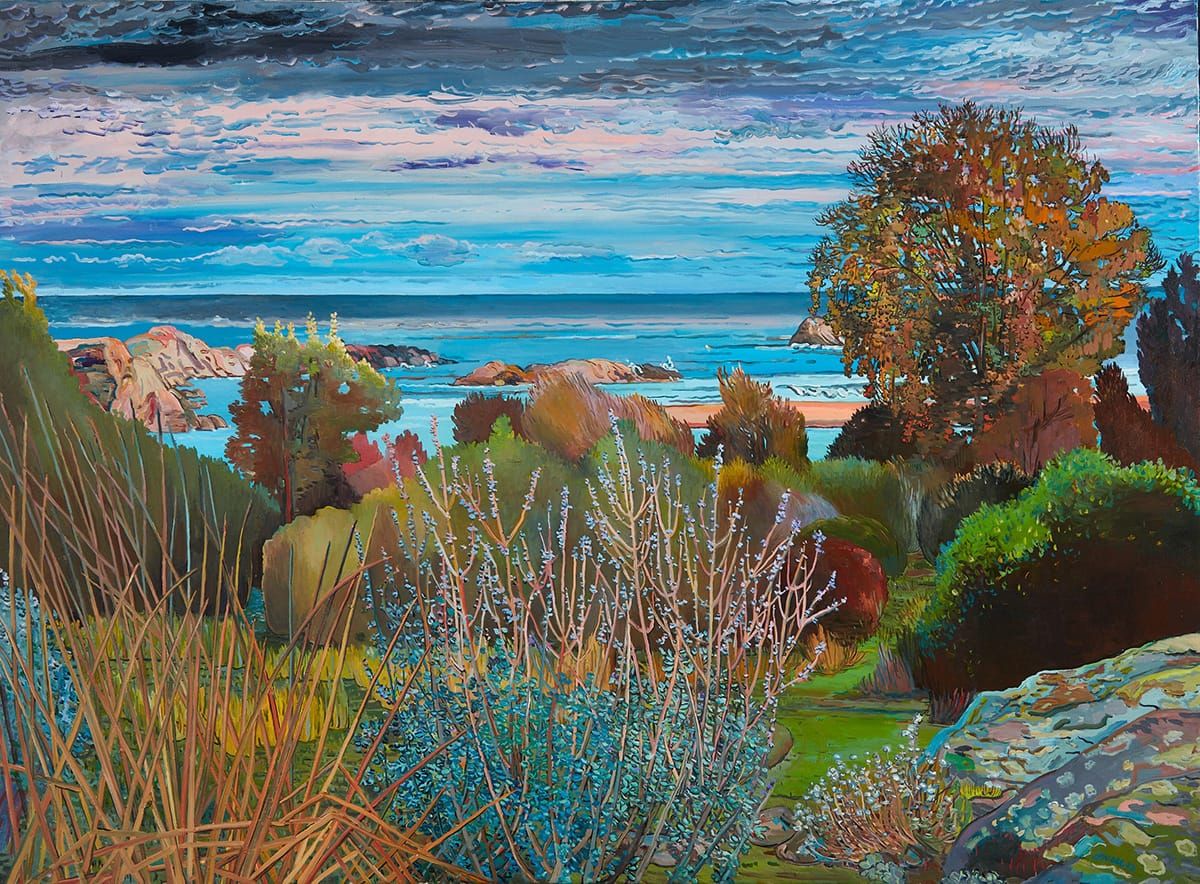
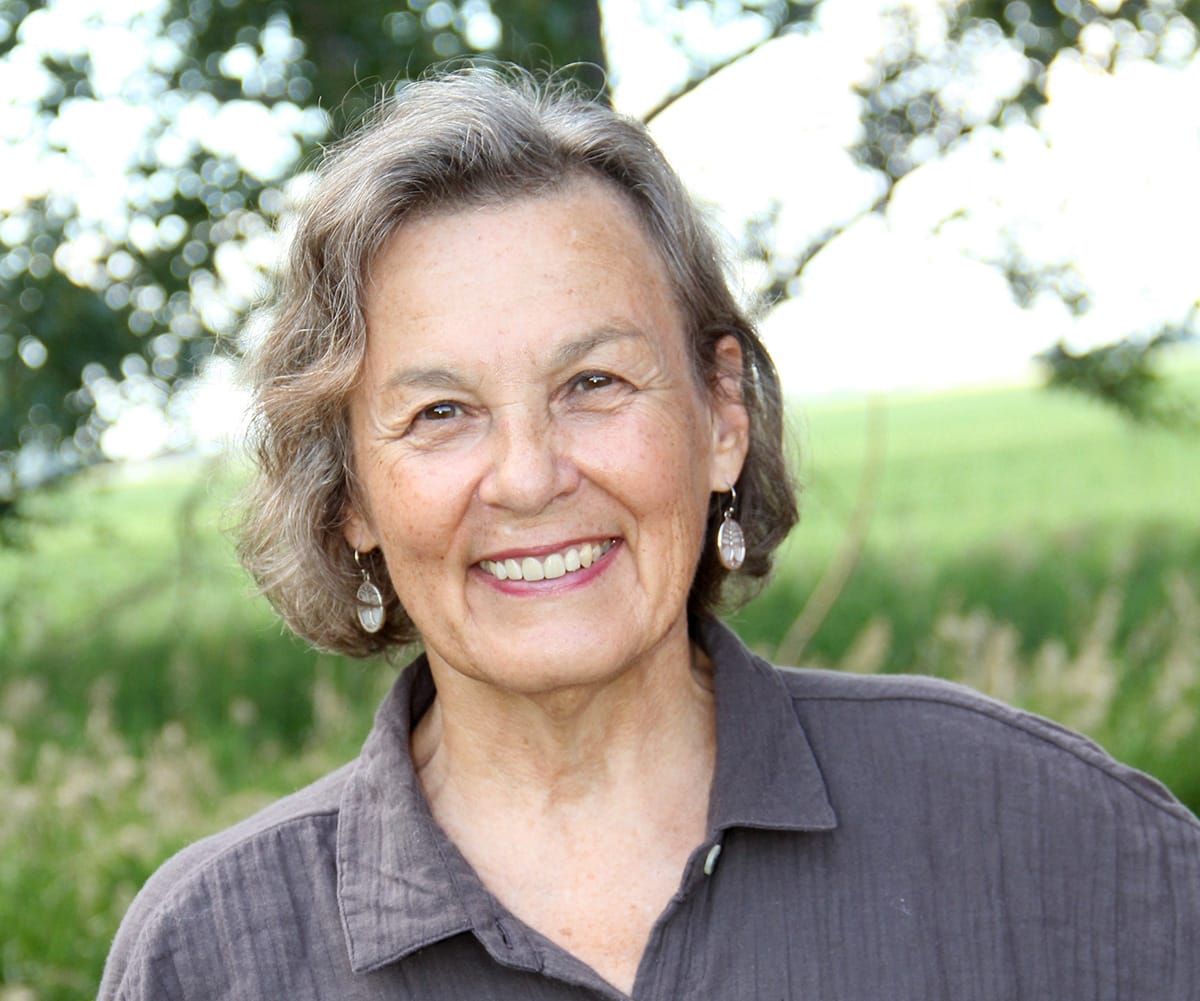
On a gloriously sunny October afternoon, landscape artist Nancy Friese set up at the bottom of the formal garden at Wethersfield, the garden created by Chauncey Stillman in Amenia, NY, where the distant landscape had caught her eye. The colors had changed dramatically since her visit a week earlier, and she merged the new colors into her painting. A preeminent plein air painter, she is constantly noticing and responding to the living world around her, channeling that energy into her work.
In selecting a location to set up her easel, she gravitates to the edges of gardens, where they meet the wilder landscape. She observes gardeners work in much the same way painters do— rotating colors, arranging contrasts, creating shapes, opening passageways.
“We’re all doing the same things, except I’m compressing it on a flat surface,” she says.
Friese—a painter and printmaker on sabbatical from her role on the faculty of the Rhode Island School of Design—has joined the Garden Conservancy as its first artist-in-residence. Friese is currently completing a residency at The Mount, the house and garden of Gilded Age novelist and tastemaker Edith Wharton. Over the course of a year, she will follow up on her work at The Mount by focusing on two remarkable historic gardens with deep connections to the Garden Conservancy: Blithewood Garden at Bard College in Annandale-on- Hudson, NY, and Wethersfield Estate & Garden in Amenia, NY. The Garden Conservancy is actively involved in preservation efforts at both locations, and Friese’s involvement will help draw attention to this work.
“Gardens and art have been closely linked for centuries,” said James Brayton Hall, Garden Conservancy President and Chief Executive Officer. “For our first ever artist-in-residence, I immediately turned to renowned plein air painter Nancy Friese, who I knew would be uniquely suited to capture these two very different and significant historic garden-landscapes.”
Blithewood, a very architectural garden with distant views of the Hudson, was designed by Francis L.V. Hoppin, who was also the principal architect of The Mount. Wethersfield, a 1,000-acre estate, offers distant agricultural views, as well as famous formal and cottage-style gardens. During her residency, Friese intends to paint at these locations in all four seasons. The hope is to present an exhibition of the completed works, and produce a series of prints capturing the landscapes as well.
With a Master of Fine Arts degree from Yale University, Friese has traveled the world and exhibited her paintings and prints in 30 solo shows and 170 group shows. Among her honors and experiences around the globe, Friese received two National Endowment for the Arts Individual Artists Fellowships; a six-month U.S.-Japan Creative Artist Fellowship residency in Tokyo, and a six-month Lila Acheson Wallace Giverny Fellowship at Claude Monet’s home in France. Most recently, she was artist-in-residence at the Andy Warhol Preserve in Montauk, NY, administered by The Nature Conservancy.
Her works are held in more than fifty corporate, government, museum and private collections, including the Museum of Fine Arts, Boston; Los Angeles County Museum of Art; New York Public Library; Musée des Beaux-Arts de Brest, France; and Museo Biblioteca La Casa del Libro, Puerto Rico. Her art is part of corporate collections ranging from Memorial Sloan Kettering to Nordstrom. Friese’s work reflects a genuine, personal engagement with nature, says Maureen O’Brien, Curator of Painting and Sculpture at the Museum of Art at Rhode Island School of Design. “She’s fearless,” O’Brien says. “She just goes out there and she spends her time immersed in nature while she does this.” Her paintings can transport a viewer into the scene, feeling the elements of atmosphere, light, and temperature, O’Brien says, recalling a Friese painting in the RISD collection called “Under Brittany Skies.” When choosing a place to paint, Friese goes beyond the typically picturesque settings, says Amy Kurtz Lansing, curator at the Florence Griswold Museum in Old Lyme, CT. The Flo Gris Museum has always been a place that artists come to paint out of doors, and Friese carries on that tradition—in her own way. One time, to Kurtz Lansing’s surprise, Friese discovered a tucked-away spot on the way to the loading dock and set herself up there.
“She can look at a landscape and see it in ways people haven’t seen it before,” Kurtz Lansing said.
Friese, who resides in Rhode Island and North Dakota, looks for safe, accessible locations where she can easily bring her supplies—gardens, preserved places, and parks. One advantage of gardens is that other visitors are observing the landscape alongside her, and they are not surprised to see someone out painting.
Although she is an engaging educator, generous with her time, attention, and knowledge, Friese describes herself as being at home with quiet time—content to sit outdoors and paint throughout the day. That is critical to her plein air practice, which might look like serendipity and sheer enjoyment, but relies on careful focus. “When you’re painting, it’s utter concentration,” she says. “You surrender to what you’re looking at.” By looking deeply, an artist can receive, translate, and expand the natural world forward for the viewer, she says.
At The Mount, she was noticing the way the upper branches of the trees had been pruned; how the bark had various textures, and how the ground cover changed from purple to blue, with light coming through the trees.
Her paintings often use “equivalent” color, trading gray for green, for example, to interpret the scene. She creates a painting over the course of multiple visits to a scene, so every work is a composite. Working with “bravura,” as O’Brien puts it, she sweeps across the canvas or paper, touching the entire surface during each visit.
Like a gardener, the artist relies on the viewer to receive it, as a dynamic experience, Friese says. Any of the arts parallel each other in this way.
Friese relishes this role, and her ability to communicate through art. “Art has to have a viewer. So, it serves others, in a beautiful way,” she says. “It may convey ideas without words, and I really love that.”
Stay Up To Date
Sign up and get the latest information on Open Days, special events and more.
Support Our Mission
Your support is critical to the efforts of The Garden Conservancy to preserve, share and celebrate America's gardens for generations to come.
